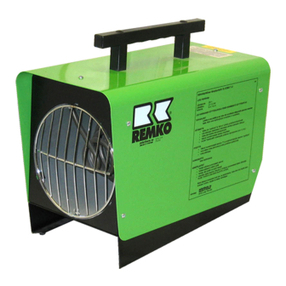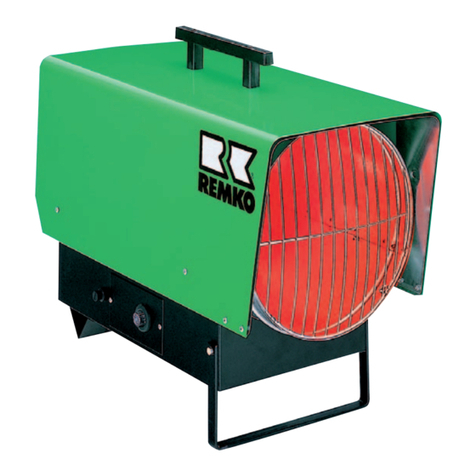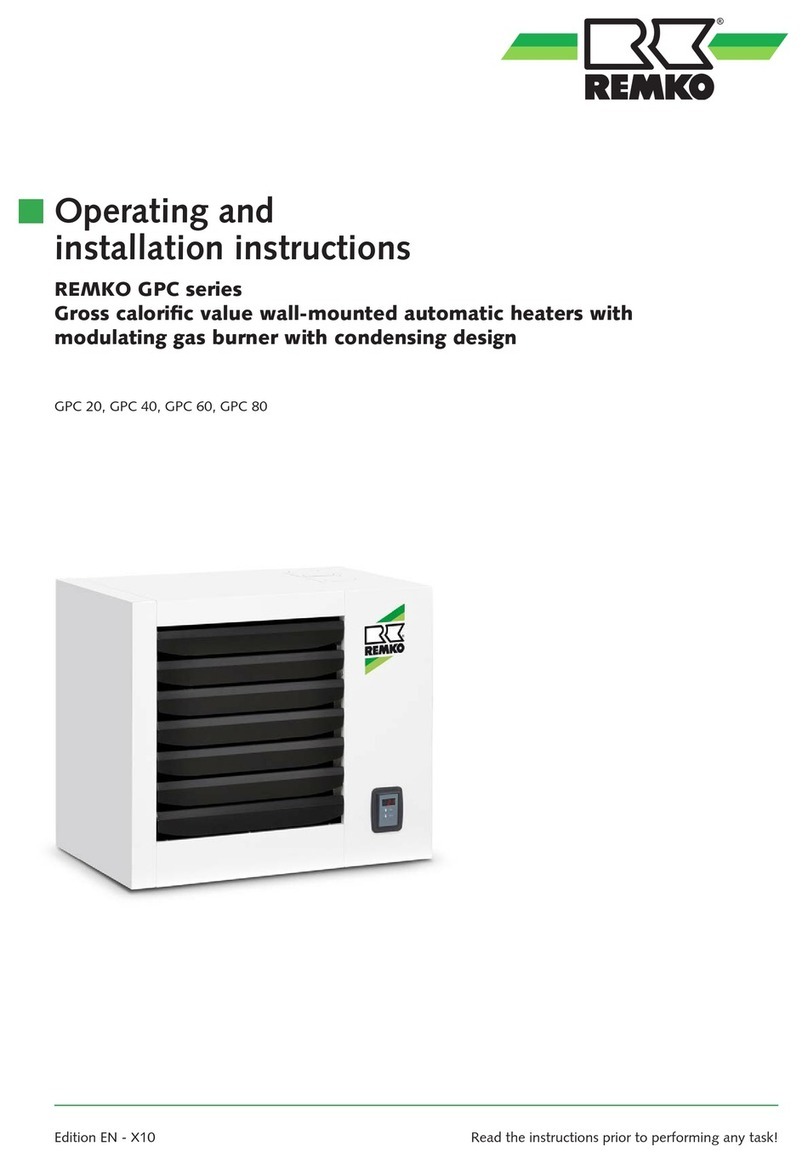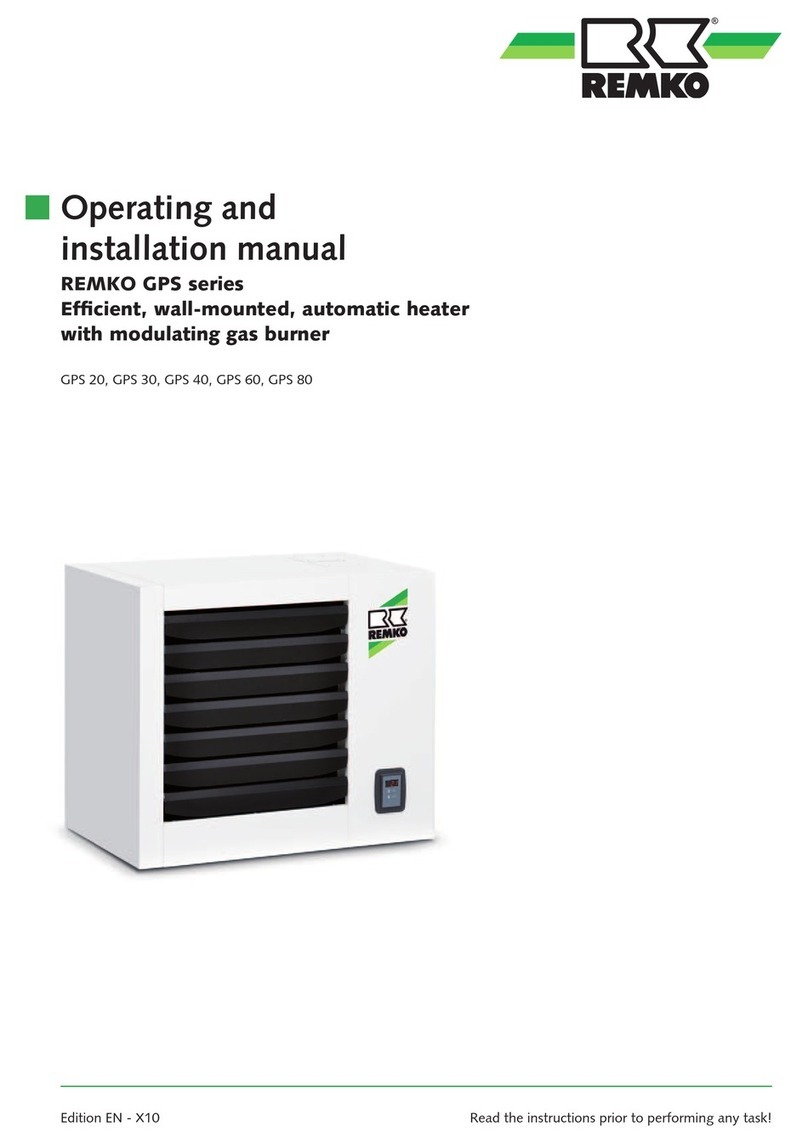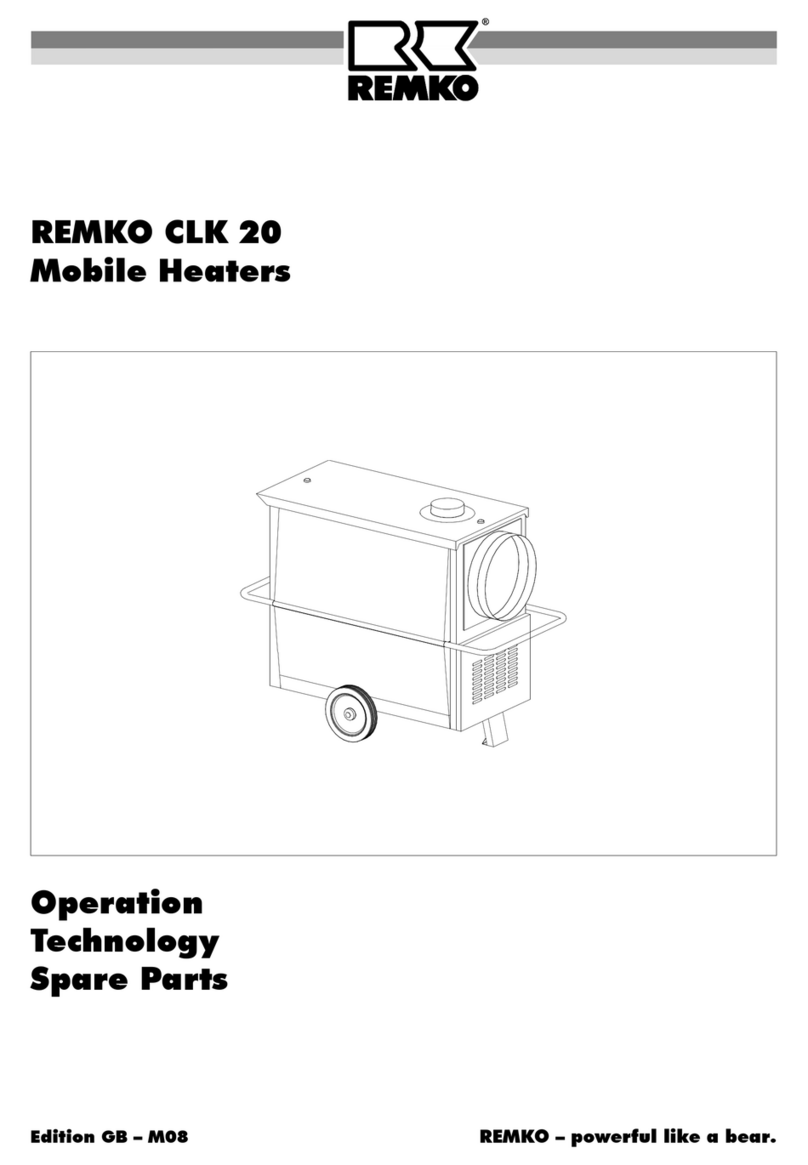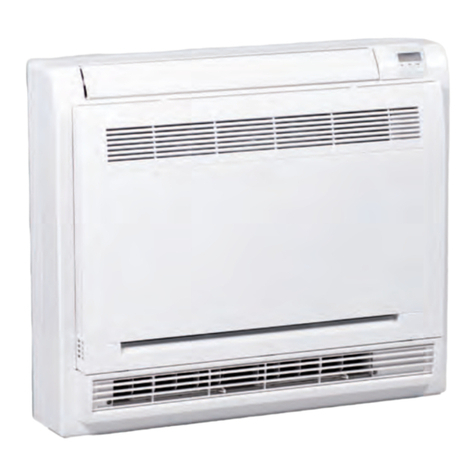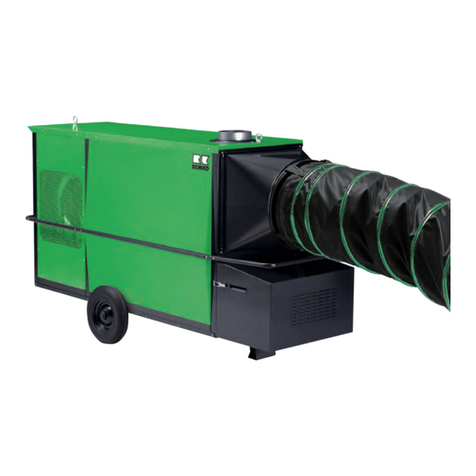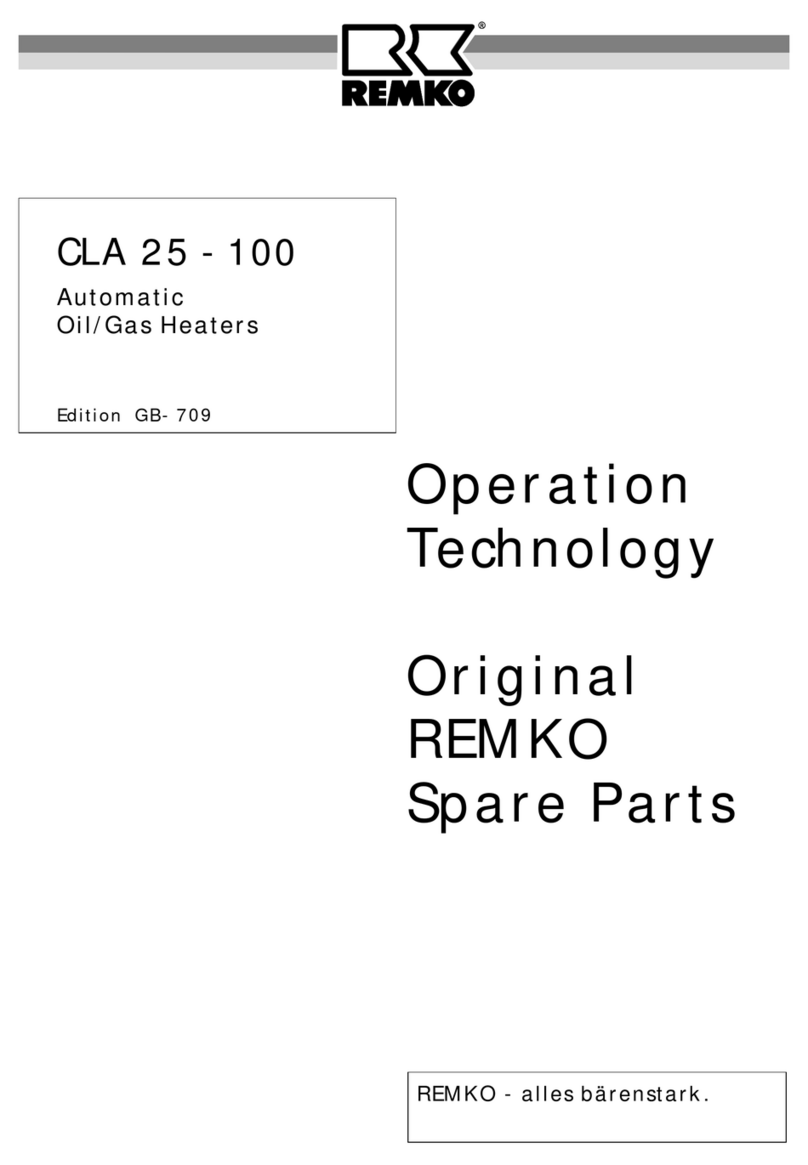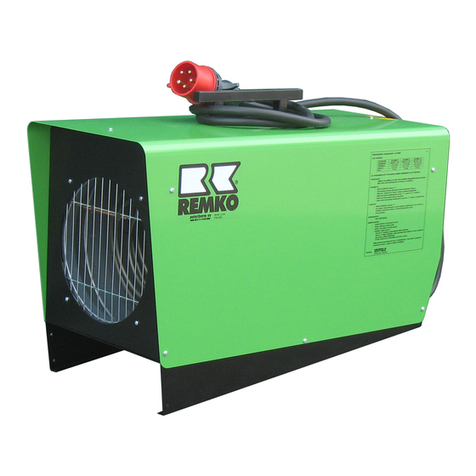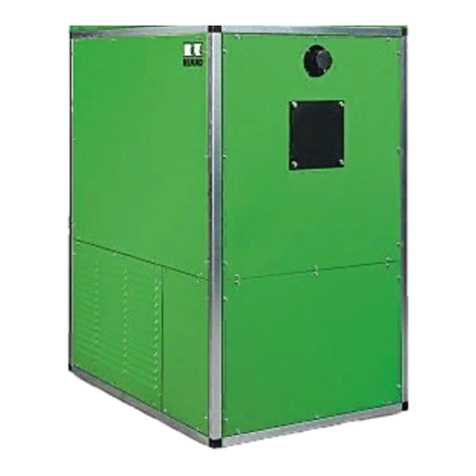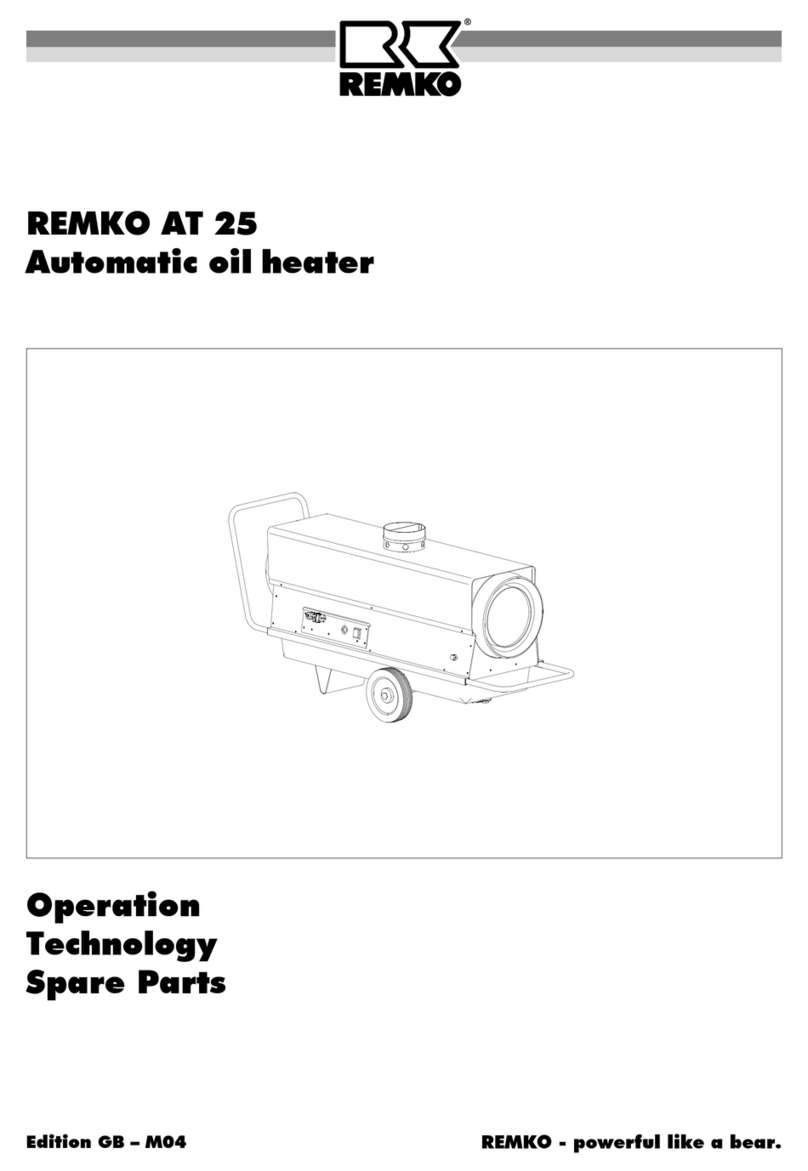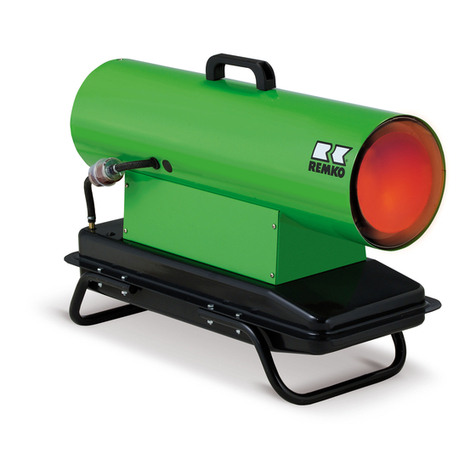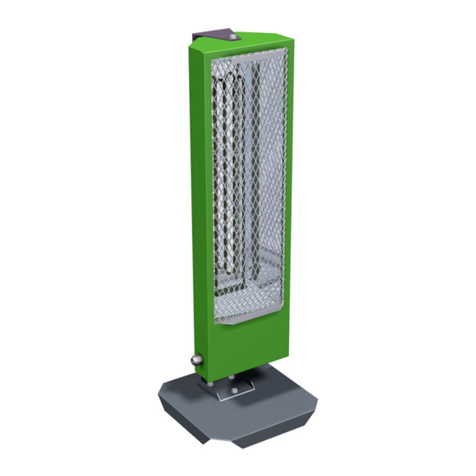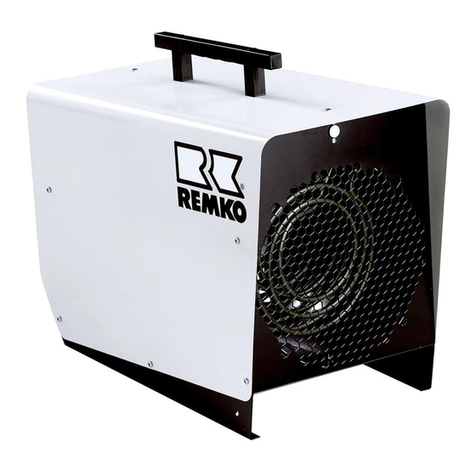
5
Safety Mechanisms
Three-speed combination regulator in accordance
with DIN 3440
The unit has 3 functions:
◊ Fan regulator (TR)
◊ Temperature monitor (TW)
◊ Safety temperature limiter (STB)
Fan regulator (TR)
The temperature control thermostat switches the circu-
lation fan on and off. The activation point is set by
means of the adjustment lever.
Target value approx. 35 °C.
Temperature monitor for the burner (TW)
The temperature monitor limits the temperature of the
units and the air being blown out via the burner in heat-
ing mode. The activation point is set using the adjust-
ment screw on the target value spindle.
Target value approx. 85°C.
Safety temperature limiter (STB)
The STB controls the temperature monitor. There is a
button that, when pressed, prevents the burner from the
restarting. The reset button on the control box must be
pressed
The activation point is fixed in accordance with DIN
3440.
Information about the safety mechanisms
The sensors of the safety mechanisms are self-
monitoring and can work at cold temperatures of down
to -20 °C. At temperatures below 20 °C, they switch off
and when the temperature rises, they switch back on
again.
When the sensor or capillary tube is damaged, or when
an excess temperature of approximately 220°C is
reached, the liquid contained in the thermostat is emp-
tied and the safety mechanism switches the unit off.
The temperature control thermostat is no longer oper-
able and must be replaced.
If the three-speed combination regulator needs to be re-
placed, only use the original REMKO-spare part ref. no.
1102562.
Make sure to observe the following:
◊ Make absolutely sure that the units are carefully in-
stalled and assembled.
◊ Do not bend the capillary tubes close to solder
points.
◊ When installing the capillary tubes, be careful not to
damage or bend them too sharply.
◊ The sensors may only be mounted at the attachment
points created for this purpose at the factory.
◊ The sensors must always be kept free of dirt and
dust.
The combustion chamber with heat-exchanger is
heated up until the temperature monitor switches on
(target temperature of 80 to 85 °C). The temperature
regulator (target temperature 35 to 40 °C) automatically
switches the air supply fan on beforehand. The green
“fan“ operating light is illuminated on the control panel
for monitoring purposes. Warm air is blown out.
When the room thermostat is in operation, the process
above is automatically repeated depending on the
amount of heat required
.
After the device is switched off with the operating switch
or the room thermostat, the air supply fan runs for a cer-
tain amount of time to cool the combustion chamber with
heat-exchanger and then switches off. This process can
be repeated several times.
Monitoring Unit Operation
All functions of the device are her carried out fully auto-
matically and monitored for safety by the three-speed
combination regulator and the automatic burner relay
(part of the forced-air oil burner).
If the flame burns irregularly or goes out, the unit is
switched off by the automatic burner relay. The control
lamp on the control panel and the red malfunction lamp
“Burner” light up.
The unit may only be restarted after the automatic
burner relay has been manually released by pressing
the “Burner” reset button on the control box.
The temperature control thermostat (TR) regulates op-
eration of the fan. The temperature monitor (TW) limits
the temperature of the air blown out of the unit in heat-
ing mode via the forced-air oil burner.
The safety temperature limiter (STB) interrupts opera-
tion of the unit or burner when extreme overheating oc-
curs or if the TW stops working or is defective. The red
malfunction light “Overheating” is illuminated on the
control panel.
The STB is released by pressing the “Overheating” but-
ton on the control panel. The STB can only be manually
released after the unit has cooled.
The fan motor is monitored by a thermal overcurrent re-
lay. If the capacity of the motor is overloaded, operation
is interrupted by the relay and the red malfunction light
“Fan” is illuminated on the control panel.
All electrical components are also protected by safety
mechanisms. They can only be reset once the control
box has been opened. Prior to opening the control box,
the unit must be unplugged from the power supply.
Prior to resetting the unit, the causes of the malfunction
must be identified.
*
Before releasing the safety temperature limiter
(STB), the possible causes of the malfunction
must be identified.

